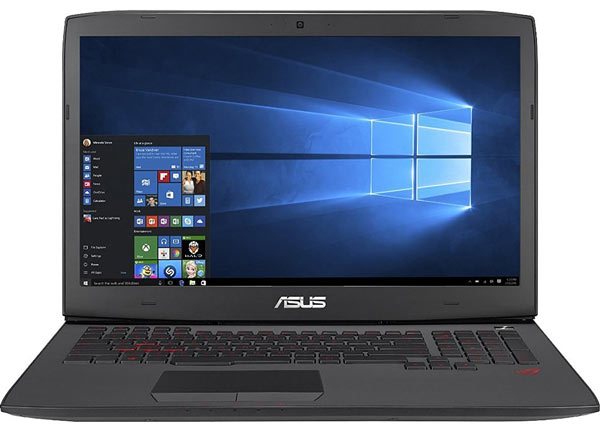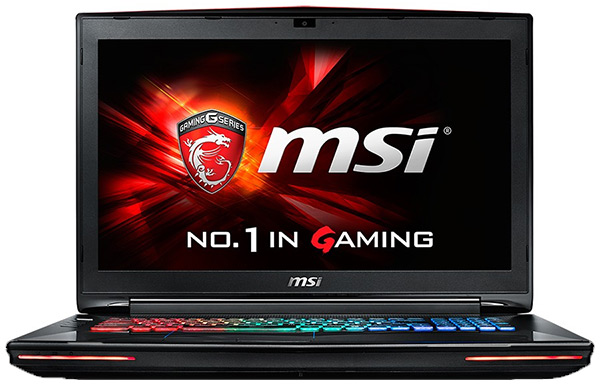Let’s be honest. Most laptops won’t cut it. You’re going to need a powerhouse notebook that can handle heavy project loads in programs designed for 3D environments and video rendering. This is not your fine-arts-major cousin’s laptop.
Engineering applications are almost as demanding as gaming requirements; excellent resolution, plenty of memory and storage, and large screens. Before you decide that it’s impossible to find what you are looking for, let’s look at a few things essential for a Mechanical Engineering laptop.
Processor speed
Applications required by Mechanical Engineering students are basically CPU exhaustive. They have to load huge databases to set up the workstation, and if you go light on the processor, you’ll spend a frustrating amount of time just sitting… and waiting. Not all engineering software work in this manner (some software is more GPU-bound: AutoCAD & SolidWorks) and even then, buying a better processor is the best investment you could make.
Take a look at the programs required by your department and what their specifications are. Although your ideal specifications and your budget may not align exactly, you should get as close as you can. This is not an area to skimp. The best laptop for Mechanical Engineering students is going to have enough processor to run high-end programs smoothly.
More precisely, I advise getting at least i5-6300HQ/i7-6500U. If you want a high-end CPU, you’ll need to look at i7-6700HQ or even i7-6820HK. Though, 6820HK a lot more expensive – it’s found in laptops that are priced at $1700 or more.
k
Memory
All that processor speed needs to have the memory to match. Memory allows your computer to perform its everyday tasks, and if your memory is low, your processor won’t perform as well as it could.
Different disciplines all require different amounts of memory, but for engineering programs, about the minimum is going to be 8GB. Anything less will be a frustrating experience sitting and waiting for your programs to load and to function.
If you have more in your budget, go for a 12GB or even a 16GB and you’ll be glad you did.
Graphics card for mechanical engineering
Good video card aren’t an option. You aren’t typing. You are running heavy programs that require excellent speed and resolution to perform your functions. Programs like MATLAB and CAD are used for 3D environments and video rendering, and the average laptop isn’t going to be able to handle the demands.
For the most part, you can get away with something like a gaming graphics card. The best laptop for Mechanical Engineering students will have a dedicated graphics card good enough to handle those programs.
I advise looking for Nvidia GTX 960M, 970M, 1060, 1070, 1080. The last 2 are out of most students budget. So in short, 960M, 970M, 1060 are great graphics cards for a mechanical engineering student. The very best laptops would have 1060, 1070, 1080 or anything between Nvidia Quadro M2000M and M5500 (or a respective AMD FirePro card).
Storage
Storage can be one of the places where you make a few sacrifices, but ideally, storage should be 500GB SSD. For a student, that might a bit too much – especially when you consider that a laptop with 500 GB SSD drive usually costs $1,200 or more. You’ll need plenty of storage for your school projects and for other things besides school like music or gaming unless you have a cloud storage/an external hard drive.
For a student, it’s entirely OK to have 250 GB SSD but I wouldn’t go for anything less than that.
Operating System
You may already have an opinion in the Mac versus Windows fight, but most programs for engineering students run native on Windows.
This doesn’t mean that you are forbidden from investing in a Mac, but you’ll spend some time finding workarounds for software, which will add time to your projects, and it may just be easier to use Windows to save yourself the hassle of finding all the parallels.
Windows come with a lower price tag. If you’ve got the heavy capability required of engineering programs, chances are you’ll want to do some gaming as well, considering your specs are similar to those required for some of the higher end games.
Requirements wrap-up
So now you have an idea of the type of specs required for your major’s unique workload, and you may be thinking you’ll never be able to afford a laptop with all your ideal specs. Good news and bad news.
Bad news? No, you won’t be able to buy a $200 Chromebook and be able to use it for anything besides writing out grocery lists to yourself. You’re going to have to put some money into an investment laptop. (OK, you can use a Chromebook for taking notes in lectures, you might even want to get 2 laptops – 1 powerhouse and a cheap Chromebook.)
Good news? It might not be as expensive as you think. Sure you could spend $3000 for a massive desktop workstation, but you don’t have to. There are a few notebooks out there that will function as workstations and give you enough of your requirements that you can make it through school without too much of a headache. Let’s take a look.
Acer Aspire E 15 (E5-575G-76YK)

Laptops with the correct specifications for engineering students aren’t exactly cheap, but the Acer Aspire is a good entry level computer with a price point that isn’t so out of range for a student.
The Acer comes with a sixth generation i7 processor, the Intel Core i7-6500U, which is a great processor for the weight of the programs you’ll likely be running. It features an 8GB memory, which can handle the demands of the processor without slowing anything down.
The weight is good for a laptop of this type at 5.3 pounds, and the battery is an excellent 8 and half hours. Keep in mind, though, that the real portability of this laptop will be affected by the programs you have. Battery life is estimated with dim screen settings and only light web browsing on wifi, so your real battery estimate may be much different.
It also comes with a backlit screen so that you can work late into the night right before a big project. A downside to this computer is the storage. For most people, a 250GB SSD storage is plenty, but engineering programs may require a lot more than that. Figure out how to store all your projects before investing in this computer.
Asus ROG G751JT-WH71

The price of the Asus is a jump from the Acer, but what you get is a much better amount of storage so you don’t have to go looking for so many other options.
The Asus is an excellent, though a little heavy, laptop meant to be used as a workstation rather than a portable machine. The processor is the Intel Core i7-4720HQ which is the same processor you’d find if investing in a desktop.
The graphics are excellent as well, Nvidia GeForce 970M 3GB, and plenty memory for running the required software of most engineering programs.
Even the memory is an upgrade. 8GB is about the minimum to run the programs without bashing your head against the wall waiting for things to load, and the Asus offers you 16GB. There’s a full terabyte of HDD storage as well, way more comfortable for saving projects.
The weight is a downside; the result of software akin to a desktop is a weight more akin to a desktop, at 8.4 pounds. It’s still portable, but it won’t be comfortable. Battery life is unconfirmed at about 3 hours of web browsing according to some customer reviews, so you’d have to experiment and see for yourself. Overall, probably best to keep plugged in and stationary.
MSI GT72 Dominator-019

The MSI is a competitor to the Acer Predator 15, and is a powerhouse machine, though at the highest priced investment on this list. It gives you the Intel Core i7-6820HK, and an M.2 SSD flash drive which has 500GB of space and 1 TB of HDD.
It has 16GB of memory and excellent graphics with Nvidia GeForce GTX 970M 3GB. It’s a fast laptop, so you shouldn’t have trouble running any of your software for your classes.
The downside again is that with such powerful capabilities, the laptop itself isn’t really that portable. The battery life is only about 3 hours and the weight is 8.4 pounds. Like the Asus, it’s technically portable, but it isn’t something you’ll want to carry around with you all day long. It will most likely be converted to a workstation for most of your work.
Table of Best Laptops for Mechanical Engineering
| Laptop | Price (approx) |
| Acer Aspire E 15 (E5-575G-76YK) | $700 |
| Asus ROG G751JT-WH71 | $1,200 |
| MSI GT72 Dominator-019 | $1,750 |
Majoring in Mechanical Engineering is no joke and your laptop needs to be able to handle some hard hitting work. You can sacrifice a little in terms of storage, but the memory, the CPU, and the graphics need to be as good as you can afford so that those programs you’re running at your workstation won’t take forever.
Let us know in the comments what Mechanical Engineering laptop you chose, and if you have any questions.

Great list of mechanical engineering laptops you have been mention in this article just a few goods picks also available in the market for all engineers such as the Asus Zephyrus G14 and Dell XPS 15 it’s a great performer laptop in the market so it will be a great choice for every mechanical engineer.